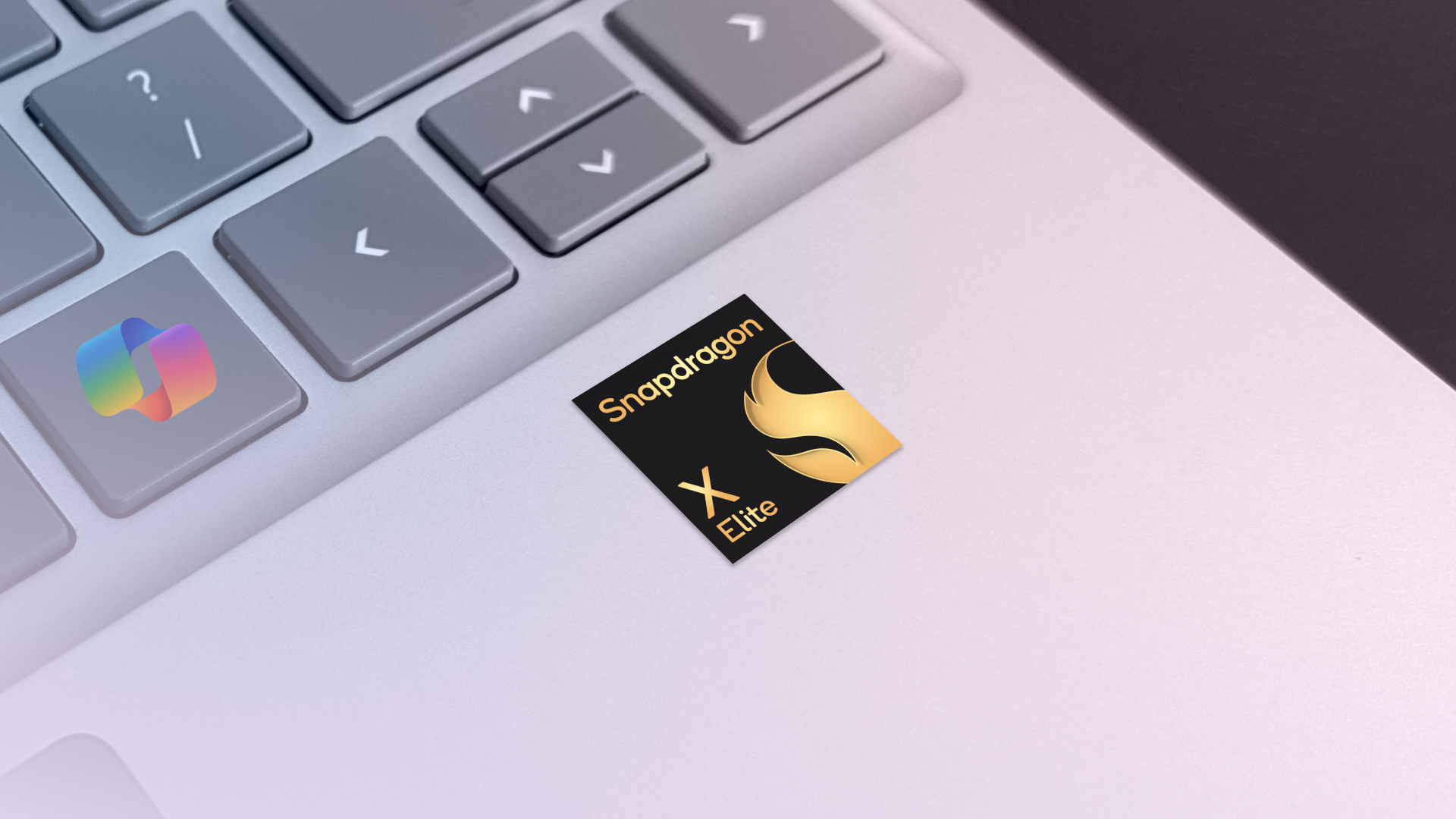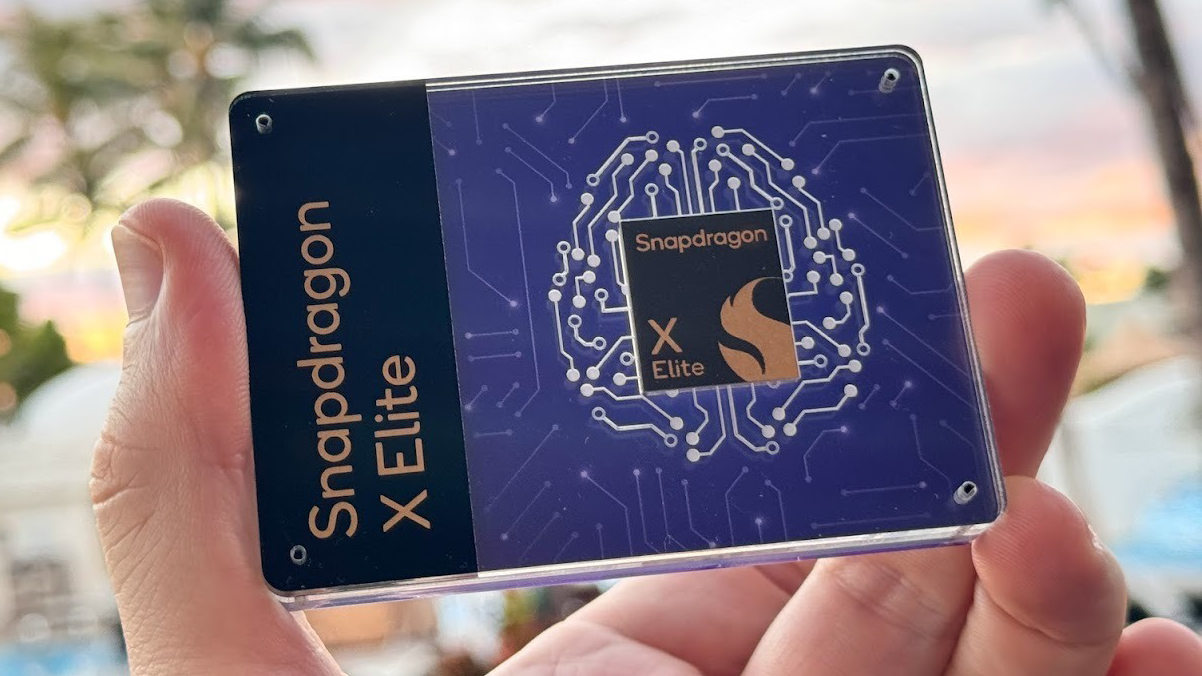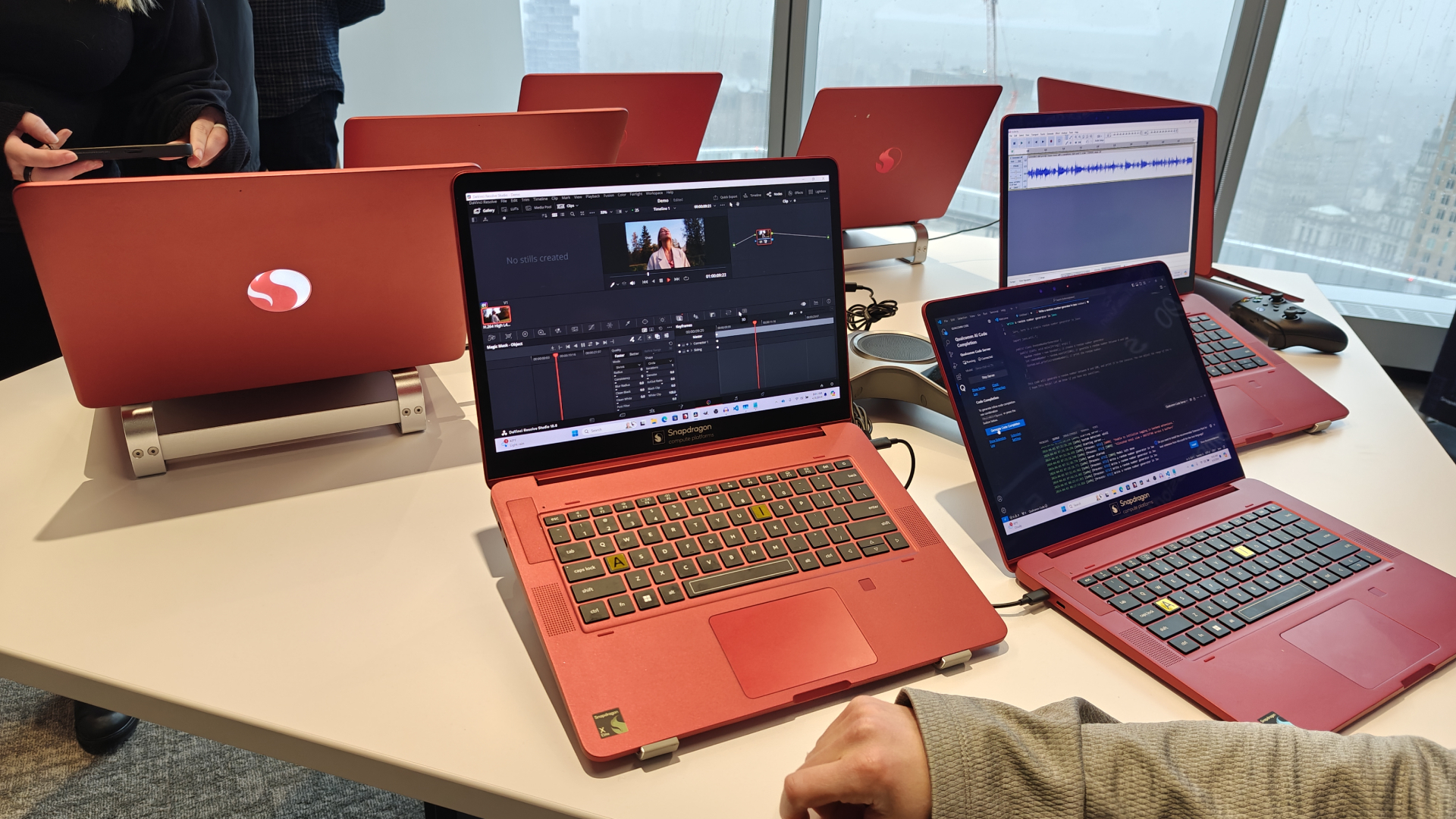
Whether you've been interested in buying a new Windows laptop recently or you're simply invested in the tech world, you've no doubt heard of Copilot+ PCs and Qualcomm's Snapdragon X Elite chipsets.
Qualcomm currently offers four Snapdragon X Elite variants, but only two are widely available right now.
The Snapdragon X Elite Dev Kit is labeled as variant X1E-00-1DE and will primarily be used as a mini PC for developers creating ARM-compatible apps. Then, the most powerful X1E-84-100 variant is only available in Samsung's Galaxy Book4 Edge.
That leaves the Snapdragon X Elite's mid-tier and low-tier chipsets, respectively labeled X1E-80-100 and X1E-78-100. These are the two chipsets you'll see most frequently advertised in Copilot+ PCs you can buy right now.
These new chipsets from Qualcomm boast better performance and longer-lasting battery life compared to x64-based chips we're used to from Intel and AMD. But how do they compare against each other? Let's dive into it.
Snapdragon X Elite X1E-78-100 vs X1E-80-100
On paper, Qualcomm's lower- (X1E-78-100) and mid-tier (X1E-80-100) Snapdragon X Elite chipset variants don't look too different.

Both chipsets are paired with LPDDR5x RAM and feature a 12-core Oryon CPU with a cache of 42 MB and a max multithreaded frequency of 3.4 GHz, 3.8 TFLOPs of Adreno GPU performance, and a Hexagon NPU capable of 45 TOPS.
Here's the key spot where Qualcomm's chipsets differ: dual-core boost capabilities.
The lower-end (X1E-78-100) Snapdragon X Elite chipset lacks a dual-core boost option, whereas the mid-tier (X1E-80-100) chipset is capable of reaching a clock rate of 4.0 GHz with dual-core boost.
While this small difference in max multithread frequency may seem insignificant, our initial test results say otherwise.
Geekbench 6.3 results
The most updated Geekbench CPU benchmark is one we run on all the laptops we review, as it's generally considered the best way to test performance consistently across multiple platforms. A higher score indicates stronger performance.
We haven't published reviews yet for the HP Elitebook Ultra, equipped with the Qualcomm's X1E-78-100 variant, or Microsoft's new Surface Pro packing the X1E-80-100 variant. However, they're in our hands and they've been subject to many of our benchmarks, including Geekbench 6.3.

Geekbench 6.3 delivers two scores: a single-core score and a multi-core score. Generally, we pay attention to the multi-core score because most computer apps and processes use multiple cores, but single-core score differences are still worth noting.
The HP Elitebook Ultra earned a multi-core score of 12,717 on Geekbench 6.3 (ARM), and a single-core score of 2,371. Comparatively, the new Microsoft Surface Pro cleared an impressive multi-core score of 14,432 and single-core score of 2,813.
Despite the small 0.2 GHz max multithread frequency difference with dual-core boost, Qualcomm's mid-tier (X1E-80-100) variant was about 13% better-performing than the lower-end (X1E-78-100) Snapdragon X Elite variant, when comparing multi-core scores.
Geekbench ML 0.6 results
Testing NPU AI performance for Copilot+ PCs generally isn't as easy as testing the efficiency or overall power of a laptop's CPU, GPU, or other components. That said, one of the best tests we currently have to test AI performance is Geekbench ML, a benchmark from the same people who created Geekbench 6.
According to the official site, "Geekbench ML is a cross-platform AI benchmark that uses real-world machine learning tasks to evaluate AI workload performance." This benchmark measures collective performance of your computer's CPU, GPU, and NPU.
A higher number indicates better NPU performance, and both of Qualcomm's Snapdragon X Elite chips we're comparing today offer up to 45 TOPS of NPU performance.

In an ARM-optimized Geekbench ML test, the HP Elitebook Ultra and Microsoft Surface Pro delivered scores of 2,861 and 2,859, respectively.
As we expected, the strength of Qualcomm's Hexagon NPU, capable of the same 45 TOPS in both variants, is practically identical. If you're looking to buy a Snapdragon X Elite-powered laptop purely for AI-related task performance, there's no need to be specific about which variant you grab.
HandBrake 1.8.0 results
Put simply, the HandBrake test involves converting a 4K video to 1080p and recording how long the process takes. More specifically, we load the 6.5GB, open-source, 4K Tears of Steel video into the HandBrake video encoder, and then convert it with the Fast 1080p30 preset. The less time it takes a laptop to complete this process, the better.
Because these are ARM chips, not your typical x64-based chips found in most Windows laptops, we ran this HandBrake test with both x64- and ARM-optimized versions.

In an average of three HandBrake 1.8.0 (x64) tests, the HP Elitebook Ultra (with X1E-78-100) completed the process in 9 minutes and 41 seconds. An average of three ARM-optimized versions of the same test provided a slightly shorter completion time of 6 minutes and 53 seconds.
The Microsoft Surface Pro (with X1E-80-100) completed the x64-optimized HandBrake test in an average of 8 minutes and 12 seconds, and the ARM-optimized version in just 5 minutes and 21 seconds.
Comparing the two results, the Microsoft Surface Pro was able to complete the x64-optimized HandBrake test roughly 15% faster than the HP Elitebook Ultra, and the ARM-optimized test about 22% faster.
Outlook
If you want the best possible performance out of a Snapdragon X Elite-powered laptop, the X1E-80-100 variant is the one you want. This mid-tier variant scored 13% higher on Geekbench 6, and completed the HandBrake test 22% faster.
When you consider there's not much of a price difference between Copilot+ PCs with this better-performing X1E-80-100 variant and the low-end X1E-78-100 variant, why wouldn't you choose the one that's slightly better-performing?
That said, if the only Copilot+ PC you can get your hands on is one equipped with an X1E-78-100 or if it's majorly discounted, it's certainly not a bad computer to own. Both its multi-core Geekbench 6 score and HandBrake completion time are nothing to sneeze at.
But if you're after a budget-friendly ARM-powered Windows laptop, one featuring Qualcomm's Snapdragon X Plus chipset (X1P-64-100) might be a smarter choice. It's equipped with the same NPU, and therefore AI performance capabilities, but features a slightly less powerful 10-core CPU at a more affordable price.







